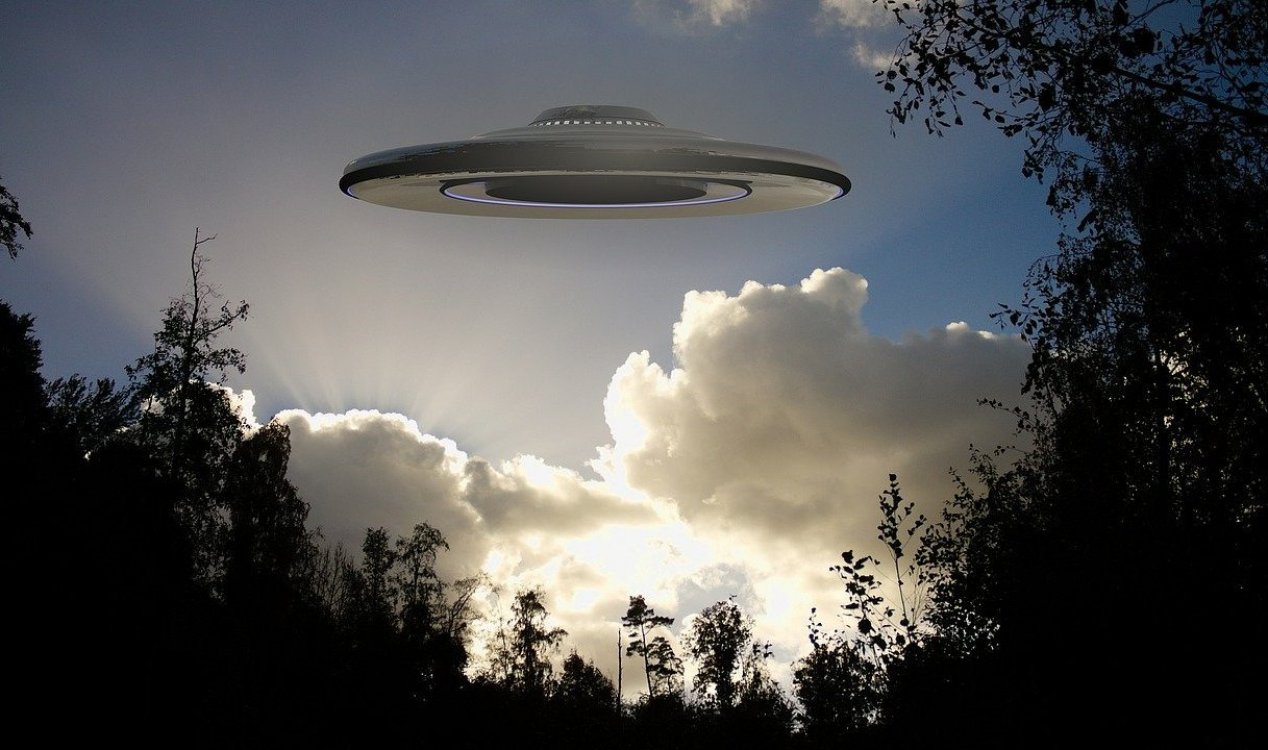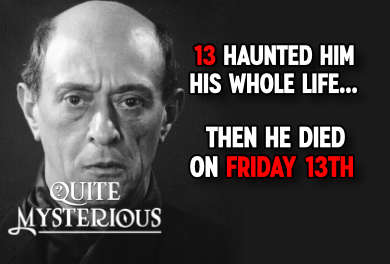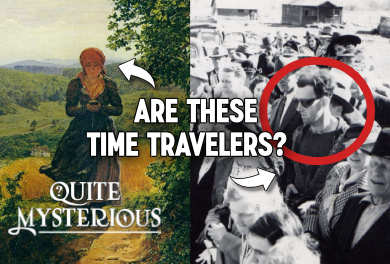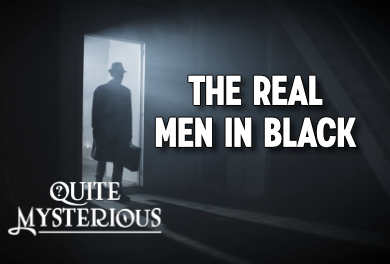The UFO Phenomenon
 2 comments
2 comments

UFOs abound in the skies over France. Image Credit: Pixabay / christianplass
In France, the Study and Information Group on Unidentified Aerospace Phenomena (GEIPAN), has been investigating unidentified aerial phenomena (UAPs) - more commonly known as UFOs - for the past 45 years. Attached to the National Centre for Space Studies (CNES), GEIPAN has been invited by NASA to present its activities and working methods before a newly established independent team that will study data and set up methods to analyse unusual phenomena observed in the sky.
Set up in 1977, GEIPAN is a team of four experts tasked with gathering witness accounts, conducting surveys, publishing studies, managing computer systems and overseeing the organisation's operations. A technical department at CNES, it relies on outside personnel, expertise and talent, liaising with numerous investigators, experts and institutions, including France's Air Force, National Gendarmerie and Police Force, the Directorate General for Civil Aviation, the National Centre for Scientific Research (CNRS) and the weather service Météo-France.
The existence of a "UFO Force" in France has entered the country's popular imagination in recent years, with the Canal+ comedy drama series Ovni(s) - the French term for UFOs. In its quest for realism, the series depicts equipment used for GEIPAN investigations, including the "SimOvni", which we use to create simulations of the phenomena described in eyewitness accounts.
What exactly is a UAP?
Unidentified aerial phenomena are unusual events observed by eyewitnesses that are seemingly inexplicable. They most often take the form of a bright light.
Simple explanations can be found for over 60% of UAPs - they are usually paper lanterns, party balloons, hot air balloons, aircraft, satellites, meteorites, stars, planets and so forth. While these occurrences may seem straightforward or banal, it is important to remember that every one of these recorded sightings presents some strange, unique, or noteworthy aspect. GEIPAN gathers 700 eyewitness reports annually, with 150 to 200 remaining as open investigations. Anyone is able to submit a report using the form on the GEIPAN website.
An event's apparent peculiarity may be dependent on the environment and conditions of the sighting. These might involve low-light conditions, an absence of sound, atmospheric turbulence causing a star to twinkle strangely, or sunlight reflecting off a distant aeroplane.
There are also more spectacular sightings, such as the appearance of meteorites breaking up in the atmosphere. One such atypical event was when the Starlink satellite cluster entered into orbit, giving rise to multiple reports of bright spots moving in a row, and others of a "glowing orb". The series of spots were the 50 to 60 satellites themselves going into orbit, sighted at sunset or sunrise when the sky was darker and the sun was reflecting off the satellites. The orb corresponded to the second stage of the Falcon 9 rocket, which launched the satellites into orbit. Propulsions from this spacecraft every one to two seconds created a bubble of gas, which then appeared as a luminous sphere in the night sky under the light of the setting or rising sun. Alongside this sphere a shining spot, sometimes shaped like a butterfly, caused the removal of the remaining oxygen and kerosene from the rocket's second stage before it re-entered the atmosphere.
UAP reports can also be the result of a simple misinterpretation. An amateur astronomer might capture a high-quality image of a bright flash in the sky, but popular astronomy apps would not possess enough data to offer an explanation. In this case, only the CNES internal space surveillance department could prove the presence of the stage of a rocket reflecting the sun's rays. Even the flickering candle of a paper lantern may be perceived as an object whizzing through the sky at extreme speed.
To understand and explain the observations that the GEIPAN receives, we rely on tools and applications across a range of domains, from aeronautics to aerospace (for satellites and debris), astronomy (for stars and meteorites), meteorology, image processing and more.
Reasonable explanations are found for around two thirds of the observed phenomena, but the remaining third remain unresolved due to a lack of information to analyse the report and produce an explanation. Then there are the "D cases", accounting for around 3%, whereby we have enough information but have not found an explanation. This is when we deem all the hypotheses that we have formulated and analysed to be inconclusive.
The GEIPAN methodology
GEIPAN's goal is clear: to present or attempt to present a rational answer for the misunderstood, unusual and sometimes spectacular occurrences spotted by witnesses, and to explain the reasons for their presumed irregularity.
There are three main phases involved in achieving this goal. In essence, we collect eyewitness accounts, conduct technical studies and publish analysis reports on the GEIPAN website, while always protecting eyewitness anonymity.
Vincent Costes, Responsable du GEIPAN, Centre national d'études spatiales (CNES)
This article is republished from The Conversation under a Creative Commons license.
Read the original article.
Source: The Conversation | Comments (2)
UFOs are no laughing matter for France's real-life 'Ovni' hunters
November 19, 2022 · 2 comments
2 comments
UFOs abound in the skies over France. Image Credit: Pixabay / christianplass
A team of dedicated UFO investigators in France has been studying the phenomenon for the last 45 years.
Vincent Costes of France's National Centre for Space Studies (CNES) takes a look at the history, goals and activities of this long-running endeavor.In France, the Study and Information Group on Unidentified Aerospace Phenomena (GEIPAN), has been investigating unidentified aerial phenomena (UAPs) - more commonly known as UFOs - for the past 45 years. Attached to the National Centre for Space Studies (CNES), GEIPAN has been invited by NASA to present its activities and working methods before a newly established independent team that will study data and set up methods to analyse unusual phenomena observed in the sky.
Set up in 1977, GEIPAN is a team of four experts tasked with gathering witness accounts, conducting surveys, publishing studies, managing computer systems and overseeing the organisation's operations. A technical department at CNES, it relies on outside personnel, expertise and talent, liaising with numerous investigators, experts and institutions, including France's Air Force, National Gendarmerie and Police Force, the Directorate General for Civil Aviation, the National Centre for Scientific Research (CNRS) and the weather service Météo-France.
The existence of a "UFO Force" in France has entered the country's popular imagination in recent years, with the Canal+ comedy drama series Ovni(s) - the French term for UFOs. In its quest for realism, the series depicts equipment used for GEIPAN investigations, including the "SimOvni", which we use to create simulations of the phenomena described in eyewitness accounts.
What exactly is a UAP?
Unidentified aerial phenomena are unusual events observed by eyewitnesses that are seemingly inexplicable. They most often take the form of a bright light.
Simple explanations can be found for over 60% of UAPs - they are usually paper lanterns, party balloons, hot air balloons, aircraft, satellites, meteorites, stars, planets and so forth. While these occurrences may seem straightforward or banal, it is important to remember that every one of these recorded sightings presents some strange, unique, or noteworthy aspect. GEIPAN gathers 700 eyewitness reports annually, with 150 to 200 remaining as open investigations. Anyone is able to submit a report using the form on the GEIPAN website.
An event's apparent peculiarity may be dependent on the environment and conditions of the sighting. These might involve low-light conditions, an absence of sound, atmospheric turbulence causing a star to twinkle strangely, or sunlight reflecting off a distant aeroplane.
There are also more spectacular sightings, such as the appearance of meteorites breaking up in the atmosphere. One such atypical event was when the Starlink satellite cluster entered into orbit, giving rise to multiple reports of bright spots moving in a row, and others of a "glowing orb". The series of spots were the 50 to 60 satellites themselves going into orbit, sighted at sunset or sunrise when the sky was darker and the sun was reflecting off the satellites. The orb corresponded to the second stage of the Falcon 9 rocket, which launched the satellites into orbit. Propulsions from this spacecraft every one to two seconds created a bubble of gas, which then appeared as a luminous sphere in the night sky under the light of the setting or rising sun. Alongside this sphere a shining spot, sometimes shaped like a butterfly, caused the removal of the remaining oxygen and kerosene from the rocket's second stage before it re-entered the atmosphere.
To understand and explain the observations that the GEIPAN receives, we rely on tools and applications across a range of domains, from aeronautics to aerospace (for satellites and debris), astronomy (for stars and meteorites), meteorology, image processing and more.
Reasonable explanations are found for around two thirds of the observed phenomena, but the remaining third remain unresolved due to a lack of information to analyse the report and produce an explanation. Then there are the "D cases", accounting for around 3%, whereby we have enough information but have not found an explanation. This is when we deem all the hypotheses that we have formulated and analysed to be inconclusive.
The GEIPAN methodology
GEIPAN's goal is clear: to present or attempt to present a rational answer for the misunderstood, unusual and sometimes spectacular occurrences spotted by witnesses, and to explain the reasons for their presumed irregularity.
There are three main phases involved in achieving this goal. In essence, we collect eyewitness accounts, conduct technical studies and publish analysis reports on the GEIPAN website, while always protecting eyewitness anonymity.
- Each mission begins with a report, be it submitted via our website or at a local police station. Whether using still photos or video footage, the reports always include specific data as witnessed by a human being. As with other types of scientific measurement, the data contains "measurement interference", which varies greatly depending on the individual. Sometimes the account is of excellent quality, but factors such as emotions, memories and beliefs can alter or even distort a witness's perceptions. Our priority is to filter out this interference so as to isolate the factual data.
- Next, we study the eyewitness account and its consistency. As the quality and quantity of reported information increases, its irregularity tends to decrease. At this stage, we use the GEIPAN computer database along with a host of technical applications and software. These include public-use tools as well as expertise developed by our partners, particularly that of the French Air Force (for reproducing flight paths), Météo-France (for precise weather conditions) and CNES itself (for high-precision tracking of satellites and debris).
- Finally, we sometimes carry out fieldwork, which allows us to analyse the conditions of the sighting more precisely and conduct a cognitive interview with the eyewitness. Our aim in these interviews is to flesh out the account, revealing the most reliable information possible, while not distorting it. Developed and taught by our expert psychologist, this is an invaluable method at GEIPAN. For the trickiest cases, our multidisciplinary panel of experts is summoned to help advance the study and decide collectively on its conclusion.
Vincent Costes, Responsable du GEIPAN, Centre national d'études spatiales (CNES)
This article is republished from The Conversation under a Creative Commons license.
Read the original article.
Source: The Conversation | Comments (2)

The Unexplained Mysteries
Book of Weird News
AVAILABLE NOW
Take a walk on the weird side with this compilation of some of the weirdest stories ever to grace the pages of a newspaper.
Click here to learn more

Support us on Patreon
BONUS CONTENTFor less than the cost of a cup of coffee, you can gain access to a wide range of exclusive perks including our popular 'Lost Ghost Stories' series.
Click here to learn more
United States and the Americas
UK and Europe
Israel, Palestine and the Middle-East
Russia and the War in Ukraine
Total Posts: 7,767,898 Topics: 325,001 Members: 203,754
Not a member yet ? Click here to join - registration is free and only takes a moment!
Not a member yet ? Click here to join - registration is free and only takes a moment!



































Please Login or Register to post a comment.